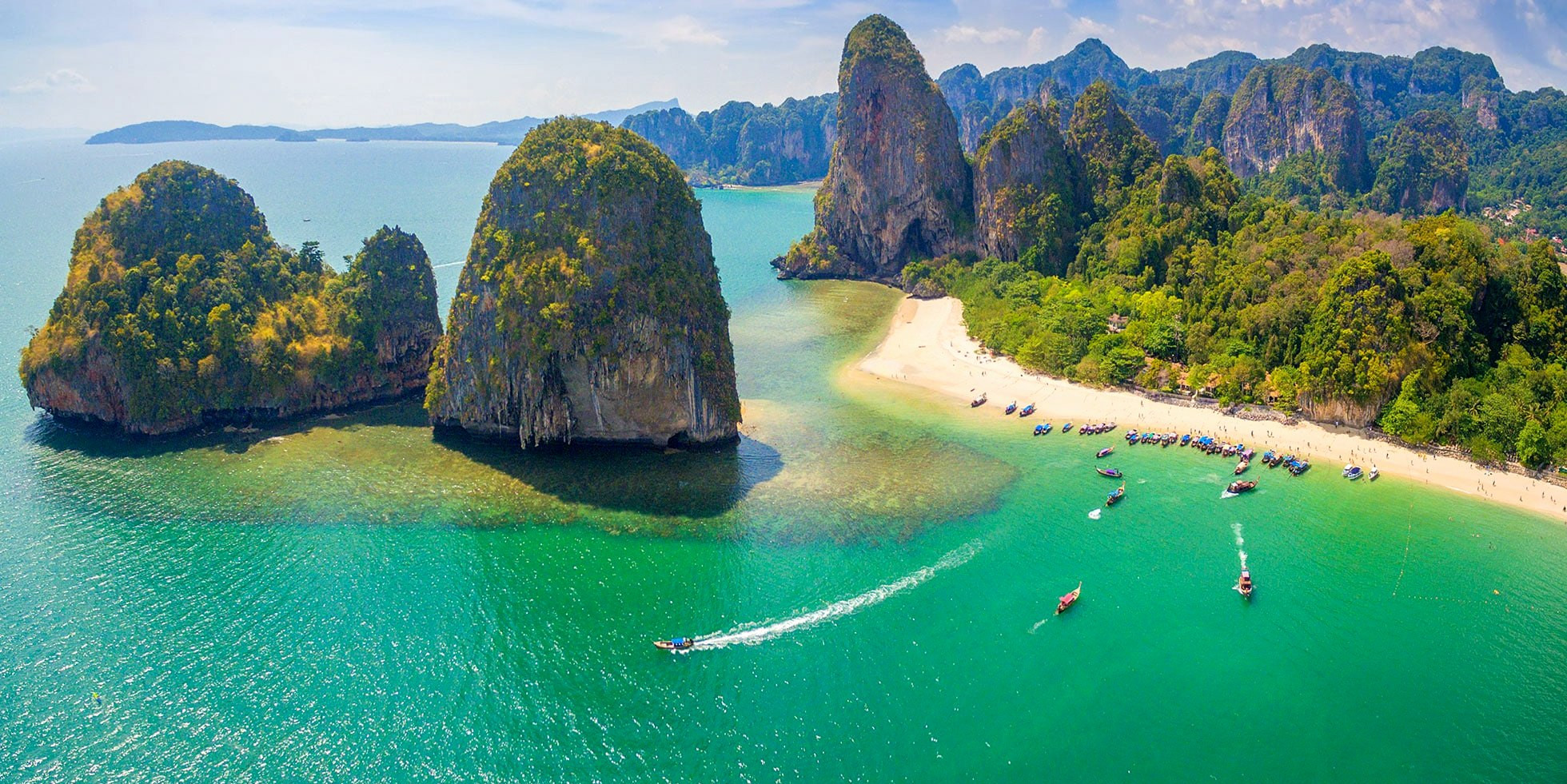Thai Massage
Thai massage, also known as "Nuad Bo Rarn" in Thai, is a traditional healing practice that dates back over 2,500 years. It combines techniques commonly found in yoga and acupressure, where practitioners use their hands, knees, legs, and feet to move you into a series of yoga-like stretches. Unlike typical Western-style massages, Thai massage is performed on a padded mat on the floor, and you remain fully clothed throughout the session.

Key Aspects of Thai Massage
-
Mind-Body Connection: Thai massage focuses on the harmonious connection between mind and body, promoting an overall sense of well-being.
-
Energy Lines: The practice is based on the concept of energy lines, or "Sen," that run throughout the body. By pressing specific points along these lines, practitioners help release any blockages, allowing energy to flow freely.
-
Stretching and Compression: The technique involves a combination of stretching, pulling, and rocking techniques to relieve tension and enhance flexibility and range of motion. This is why it is often referred to as "passive yoga" for the recipient.
-
Health Benefits: Benefits of Thai massage include reduced stress, improved circulation, increased energy, enhanced flexibility, improved range of motion, and a centering of mind and body. It’s often used as a form of preventive health care for its ability to bolster emotional and physical well-being.
-
Cultural Experience: Engaging in Thai massage is more than just a therapeutic endeavor; it's a deep dive into Thai culture and traditional medicine practices. It reflects the Thai approach to health and wellness, which emphasizes prevention over cure.
Whether you’re looking for relaxation, therapeutic relief, or simply a deeper immersion into Thai culture, Thai massage offers a unique and profound way to enrich your travel experience while benefiting from its holistic health properties.
Diving in Thailand
Diving in Thailand offers an extraordinary opportunity to explore some of the world's most picturesque underwater environments. With its warm, clear waters, abundant marine life, and vibrant coral reefs, Thailand is a top destination for divers of all skill levels.
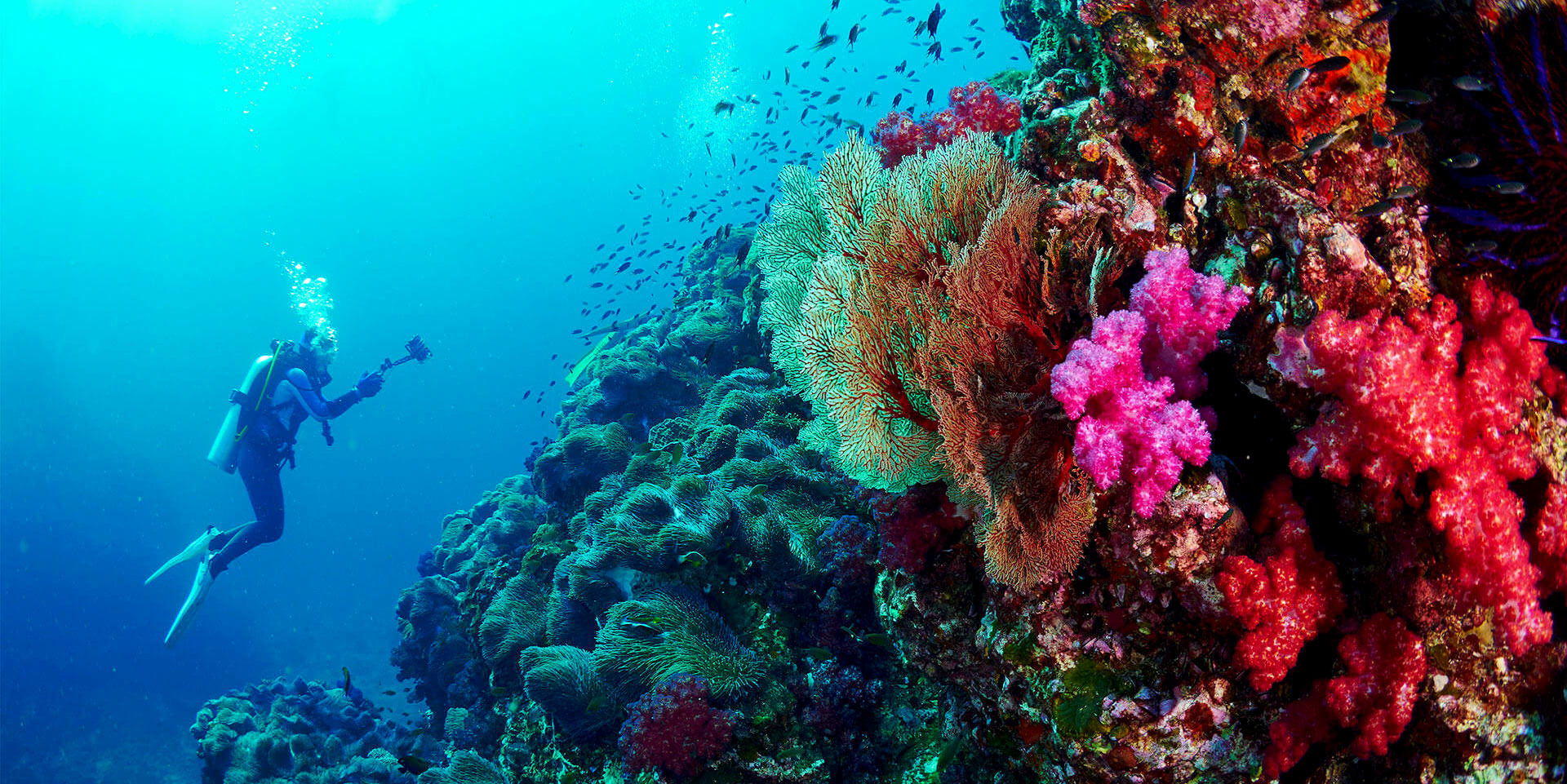
Prime Diving Locations in Thailand
-
Similan Islands: Known for their crystal-clear blue waters and diversity of marine life, the Similan Islands are often ranked among the best dive sites in the world. Divers here can expect to see everything from small colorful fish to large pelagic like manta rays and whale sharks.
-
Koh Tao: This island is particularly popular among beginner divers due to its affordable dive courses and numerous dive sites that are ideal for training. Koh Tao also offers excellent chances to spot turtles, barracuda, and a variety of reef fish.
-
Richelieu Rock: This is an underwater pinnacle near the Surin Islands, famous for its purple coral and a popular spot for sighting whale sharks, especially during the February to April diving season.
-
Hin Daeng and Hin Muang: These two remote dive sites are known for their deep water, steep walls, and the chance to encounter large marine life like manta rays and whale sharks. They offer some of the most challenging and exciting diving in Thailand.
-
Phuket: Serving as a base to many surrounding dive sites, including the Racha Islands, Shark Point, and the King Cruiser wreck, Phuket is a hub for divers looking to explore a variety of underwater terrains.
What to Expect When Diving in Thailand
-
Marine Life: Divers in Thailand can enjoy encounters with a vast array of marine species, including colorful reef fish, sea turtles, barracudas, leopard shark, and the occasional whale shark.
-
Dive Conditions: The water temperature is typically warm (around 28-30°C), which makes for comfortable diving year-round. Visibility can range from 5 to 30 meters, depending on the location and time of year.
-
Dive Season: The best time to dive in Thailand generally falls between November and April when the seas are calmest and visibility is at its best. However, some sites like Koh Tao are suitable for diving throughout the year.
-
Conservation Efforts: Many dive centers in Thailand are involved in marine conservation projects. Divers have the opportunity to participate in activities like coral propagation and underwater clean-ups, which are crucial for maintaining the health of Thailand's reefs.
Whether you're a novice looking to earn your first scuba certification or an experienced diver searching for your next big adventure, Thailand offers a diverse range of diving experiences that promise to be both memorable and rewarding.
Try Local Thai Cuisine
Trying local Thai cuisine is an essential part of any visit to Thailand, offering a delightful culinary adventure that tantalizes the taste buds with flavors of sweet, sour, salty, and spicy. Thai food is known for its balance and variety, using fresh herbs, spices, and ingredients that reflect the country's vibrant culture and culinary traditions.
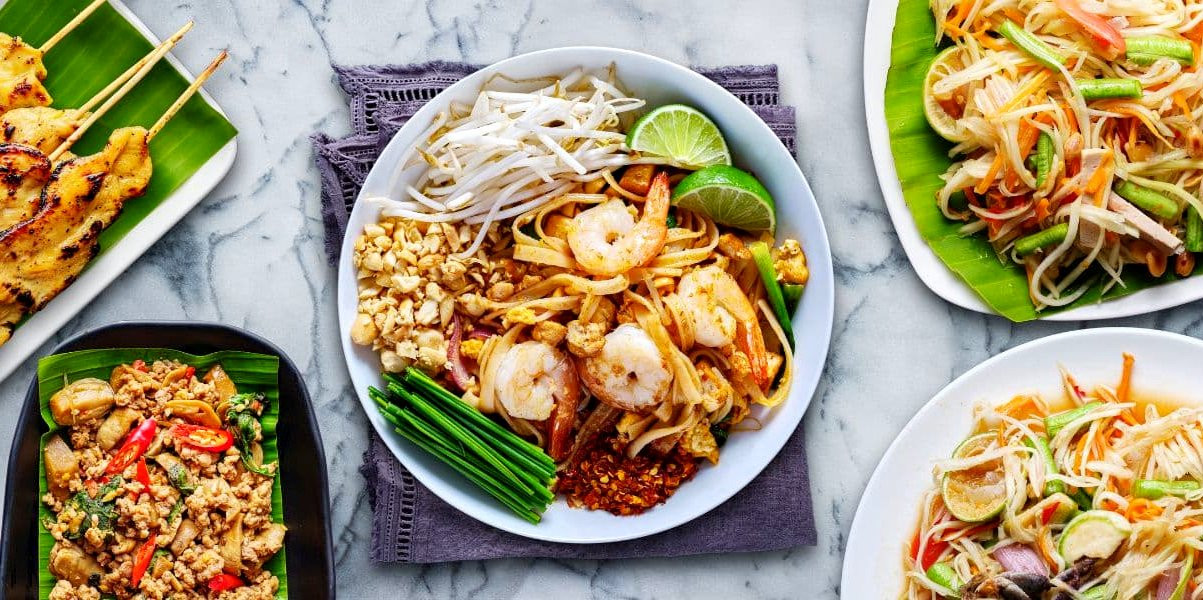
Key Dishes to Try
-
Pad Thai: Perhaps the most famous Thai dish, Pad Thai is a stir-fried noodle dish typically made with shrimp, tofu, peanuts, bean sprouts, and egg, tossed in a tamarind-based sauce. It’s a great introduction to Thai flavors.
-
Tom Yum Goong: This is a spicy and sour soup made with shrimp, mushrooms, tomatoes, lemongrass, galangal, and kaffir lime leaves. It’s aromatic and has a distinctive taste that epitomizes Thai cuisine.
-
Som Tum (Papaya Salad): Made from shredded green papaya, carrots, tomatoes, peanuts, dried shrimp, and beans, all pounded together in a mortar with a spicy lime dressing, this salad is refreshingly tangy and crisp.
-
Green Curry: Thai green curry is made from coconut milk, green curry paste, meat (like chicken, beef, or fish), and various vegetables, spiced up with ingredients such as Thai basil, galangal, and kaffir lime leaves.
-
Massaman Curry: A rich, relatively mild Thai curry that reflects the influence of Indian cuisine. Made with coconut milk, potatoes, roasted peanuts, bay leaves, sugar, cinnamon, and meat, it is usually served with rice.
-
Mango Sticky Rice: A popular dessert, especially in the hotter months, it consists of ripe mangoes served with sweet, sticky rice and a drizzle of coconut milk.
Where to Try Thai Food
-
Street Food Stalls: No visit to Thailand is complete without trying street food. Cities like Bangkok and Chiang Mai offer countless options where you can enjoy authentic, flavorful dishes at a low cost.
-
Local Markets: Visit local markets such as Chatuchak Weekend Market in Bangkok or the Sunday Walking Street Market in Chiang Mai, where you can sample a variety of dishes.
-
Food Tours: Participating in a guided food tour can provide insights into the ingredients and cooking techniques used in Thai cuisine.
-
Cooking Classes: Taking a Thai cooking class is a fun way to learn how to prepare classic Thai dishes using traditional ingredients and methods. Many classes also include a market tour to select fresh ingredients.
Culinary Considerations
-
Dietary Restrictions: Thai cuisine uses a lot of fish sauce, shrimp paste, and meat, but many places are accustomed to adapting dishes for vegetarians or those with dietary restrictions, especially in tourist areas.
-
Spice Levels: Thai food is famously spicy. If you prefer less heat, you can ask for dishes to be made "mai pet" (not spicy).
Experiencing Thai cuisine is about more than just eating; it’s about exploring Thailand’s cultural heritage and its people’s way of life. Each meal is an opportunity to discover new flavors and dishes in an exciting culinary landscape.
Floating Market Shopping
Floating markets are one of Thailand's most iconic and picturesque attractions, offering a unique glimpse into the local lifestyle and a vibrant shopping experience. These markets, set along waterways, feature vendors in small boats laden with colorful fruits, vegetables, spices, and handmade goods. Shopping at a floating market is not just about buying items; it's an interactive cultural experience that allows you to see, taste, and enjoy traditional Thai life.
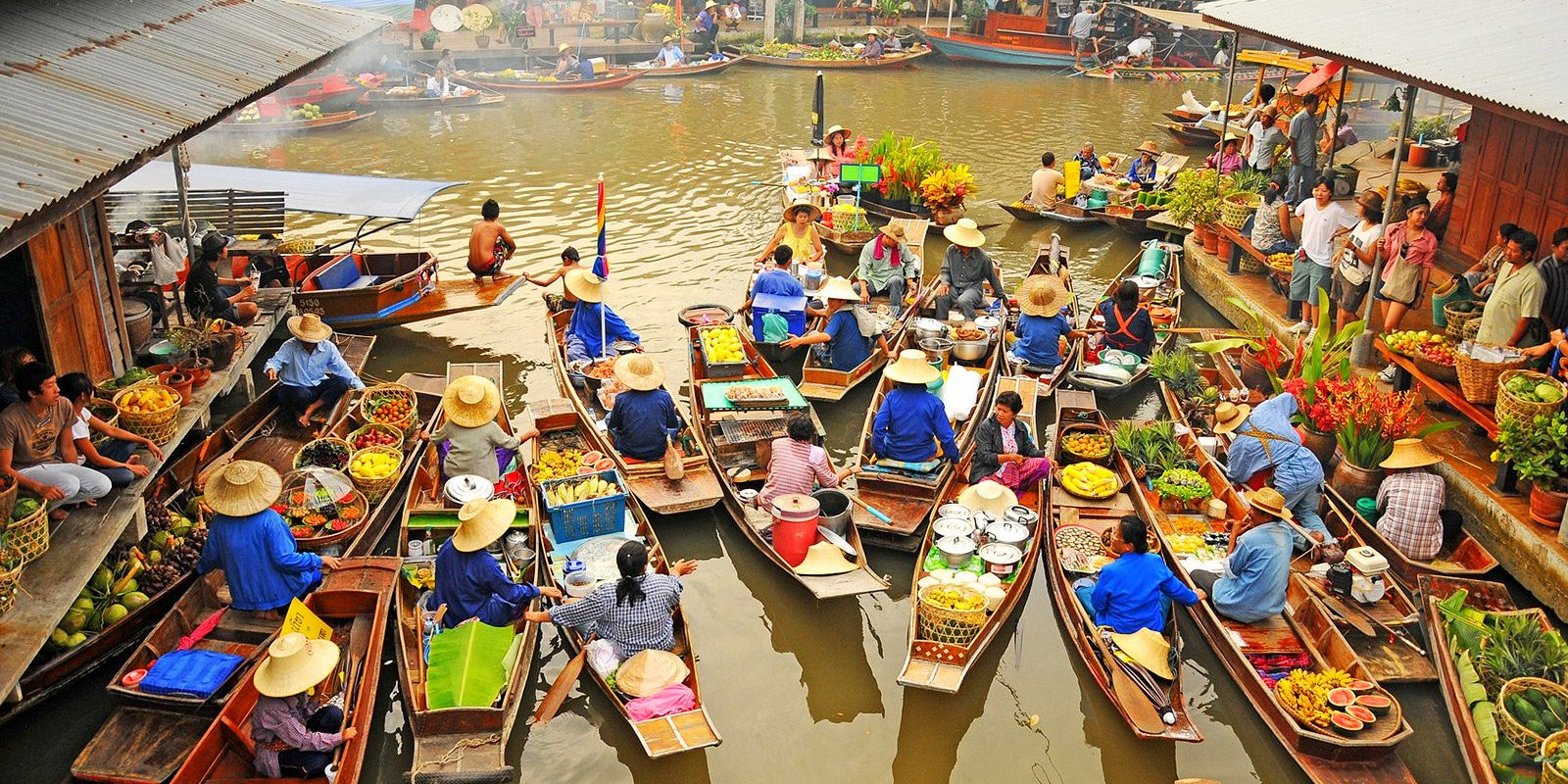
Key Floating Markets to Visit in Thailand
-
Damnoen Saduak Floating Market: Located about 100 kilometers southwest of Bangkok, this is perhaps the most famous and photographed floating market in Thailand. It's bustling with activity and offers everything from fresh produce to local handicrafts. The market is best visited in the early morning to avoid the crowds and the heat.
-
Amphawa Floating Market: This market is popular among locals and offers a more authentic experience compared to Damnoen Saduak. It's located in Samut Songkhram province, just an hour away from Bangkok. Amphawa is famous for its seafood, and you can enjoy freshly cooked meals right from the boat vendors.
-
Taling Chan Floating Market: Located within Bangkok itself, this market offers a convenient option for those not wanting to travel far. Taling Chan provides a great mix of food vendors, along with a selection of souvenirs and traditional Thai crafts.
-
Bang Nam Pheung Floating Market: Situated close to Bangkok in the Phra Pradaeng district, this smaller market offers a laid-back atmosphere. It's part of a local initiative to revive the traditional market culture and is surrounded by lush greenery, giving it a distinctly rural feel.
What to Expect and Tips for Visiting
-
Early Morning Visits: Floating markets are best visited early in the morning. This is when the markets are most lively and before the tourist crowds arrive. Many markets open around 6 AM and can get quite hot and crowded as the day progresses.
-
Food and Drinks: Floating markets are an excellent place to try local Thai street food. From fresh fruits to grilled seafood and traditional sweets, the variety is vast. Don’t miss out on trying some local beverages like coconut water or traditional Thai coffee made fresh in front of you.
-
Shopping and Bargaining: You can find a variety of goods at floating markets, including traditional Thai clothing, artisan crafts, and souvenirs. Bargaining is common, so don't hesitate to negotiate prices with vendors.
-
Photography: These markets are incredibly photogenic, so bring a camera. However, be respectful and ask for permission before taking photos of vendors or their goods.
-
Sustainable Practices: Be mindful of the environment when visiting floating markets. Avoid using single-use plastics and consider bringing your own reusable bags and containers for purchases.
Experiencing a floating market in Thailand combines the joys of shopping with the pleasure of cultural immersion, making it a must-do activity for visitors wanting to experience the local Thai way of life.
Explore a night Market
Exploring a night market in Thailand is an exhilarating experience that combines shopping, eating, and entertainment under the stars. Night markets are not just marketplaces but vibrant cultural hubs where locals and tourists alike gather to enjoy the bustling atmosphere. Each market has its own character, often reflecting the unique culture and traditions of its region.
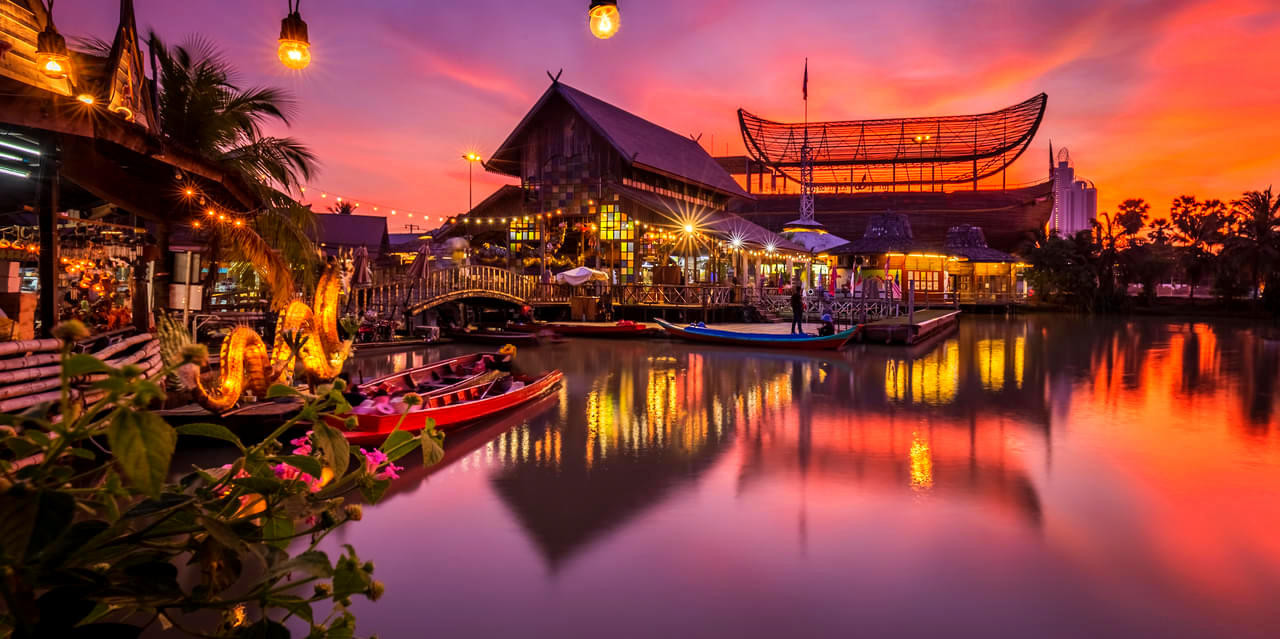
Key Night Markets to Explore in Thailand
-
Chiang Mai Night Bazaar: Located in the heart of Chiang Mai, this extensive night market stretches along several city blocks. Famous for its variety of handicrafts, artwork, and clothing, the Chiang Mai Night Bazaar is also a great place to pick up souvenirs and gifts. The market is surrounded by an array of food stalls and restaurants where you can sample northern Thai dishes and other local delicacies.
-
Asiatique The Riverfront in Bangkok: Combining a night bazaar and a mall, Asiatique offers a more upscale shopping experience along the Chao Phraya River. It features over 1,500 boutiques and 40 restaurants, along with entertainment options like a large Ferris wheel and traditional puppet shows.
-
Rod Fai Market (Train Market): Known for its vintage vibes, this open-air bazaar in Bangkok is popular among locals and tourists. It specializes in antique goods, retro fashion, and unique memorabilia. Alongside shopping, you can enjoy a variety of street food and live music performances.
-
Pattaya Night Bazaar: Conveniently located in the center of Pattaya, this covered market offers a more relaxed shopping experience away from the beach crowds. It’s a great place to find clothing, Thai silk, handicrafts, and electronic gadgets.
What to Expect and Tips for Visiting Night Markets
-
Variety of Goods: Night markets in Thailand offer an astonishing range of products, from handmade crafts and local art to trendy apparel and accessories. You'll also find plenty of items featuring traditional Thai designs.
-
Food and Beverages: The food is a highlight of any night market visit. From grilled meats and seafood to fresh fruit smoothies and local desserts, there’s something to satisfy every palate. Don’t miss out on trying classic Thai snacks like mango sticky rice or pad Thai.
-
Bargaining: Bargaining is part of the shopping experience at night markets. Vendors typically expect it, so feel free to negotiate prices, but do so respectfully.
-
Atmosphere: Night markets are lively and festive, often featuring live music and performances. The atmosphere is casual, and the markets are usually bustling with activity until late at night.
-
Safety and Comfort: Be mindful of your belongings, as crowded places can attract pickpockets. Also, wear comfortable walking shoes and be prepared for varying weather conditions, as many markets are outdoors.
Exploring a night market in Thailand allows you to immerse yourself in the local culture. It's a place where senses are heightened and memories are made, offering everything from shopping bargains to tantalizing street food, all contributing to an unforgettable evening.
Visit the Train Market
Visiting the Train Market, officially known as Maeklong Railway Market, is one of the most unique and exhilarating experiences you can have in Thailand. This market is famous worldwide for its singular setup: vendors set up their stalls right on the railway tracks and must quickly pull back their awnings and goods whenever a train passes through.
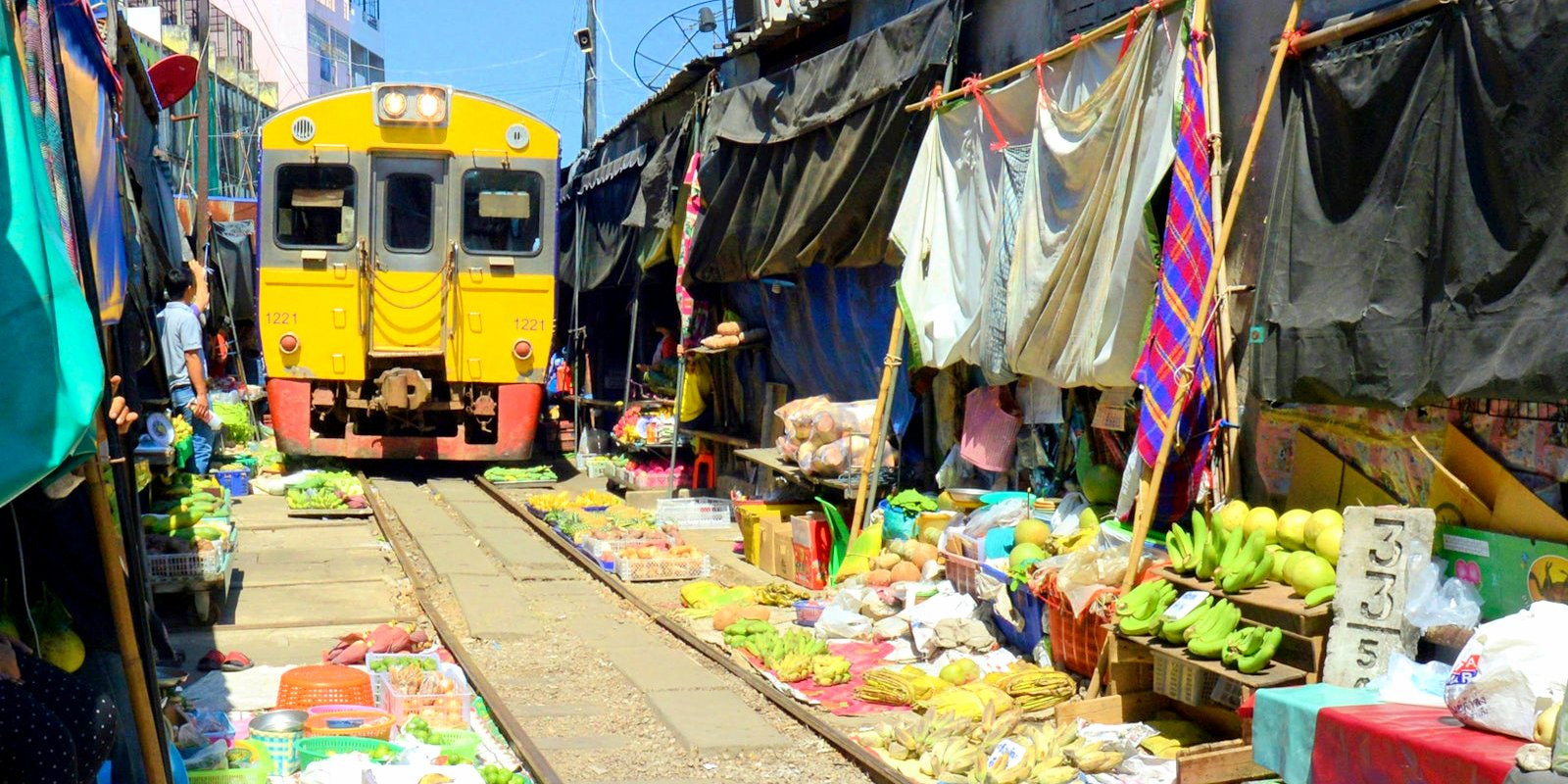
Location and How to Get There: Maeklong Railway Market is located in Samut Songkhram, about an hour and a half drive southwest of Bangkok. You can reach the market by car, taxi, or through an organized tour from Bangkok. Another popular and adventurous way to get there is by taking a combination of a train and a short tuk-tuk ride from the nearby station.
Experiencing the Train Market
-
Timing the Visit: The train passes through the market about eight times a day, seven days a week. The schedule can vary slightly, so it’s best to check the times before visiting to ensure you see this incredible event. Vendors and tourists alike prepare for the train's arrival, which happens with a warning bell a few minutes before it makes its appearance.
-
Shopping and Eating: Apart from the spectacle of the train, the market offers a variety of local produce, fresh seafood, traditional Thai snacks, spices, and souvenirs. It's a fantastic place to get a taste of local life and try some fresh and affordable Thai food.
-
Photography: The Train Market is a popular spot for photographers looking to capture the dramatic moments of the train’s arrival and departure. The vibrant colors of the market and the dynamic nature of the scene make for stunning photographs. Remember to keep safety in mind and stay clear of the train as it passes through.
-
Safety: When the train is about to pass, the market transforms rapidly; vendors expertly pull back their awnings and clear any goods that lie too close to the tracks. Visitors should remain vigilant and heed the local vendors’ cues to ensure they stay safe during the train’s passage.
-
Cultural Experience: Visiting the Maeklong Railway Market is not just about watching the train go by; it's an opportunity to immerse yourself in the local culture. Engage with the vendors, sample the local cuisine, and soak in the bustling atmosphere that defines this unique market.
Visiting the Train Market provides a glimpse into the ingenuity and resilience of the local vendors, turning what could be seen as an inconvenience into a thriving attraction that draws visitors from around the world. This market epitomizes the Thai ability to blend the rhythms of everyday life with the unusual, creating an experience you won't find anywhere else in the world.
Island Hopping in Phang Nga Bay
Island hopping in Phang Nga Bay is a breathtaking experience, showcasing some of Thailand's most stunning landscapes and iconic geological formations. The bay is renowned for its towering limestone karsts jutting out of emerald-green waters, secluded beaches, and a variety of flora and fauna, making it a paradise for nature lovers and adventurers alike.
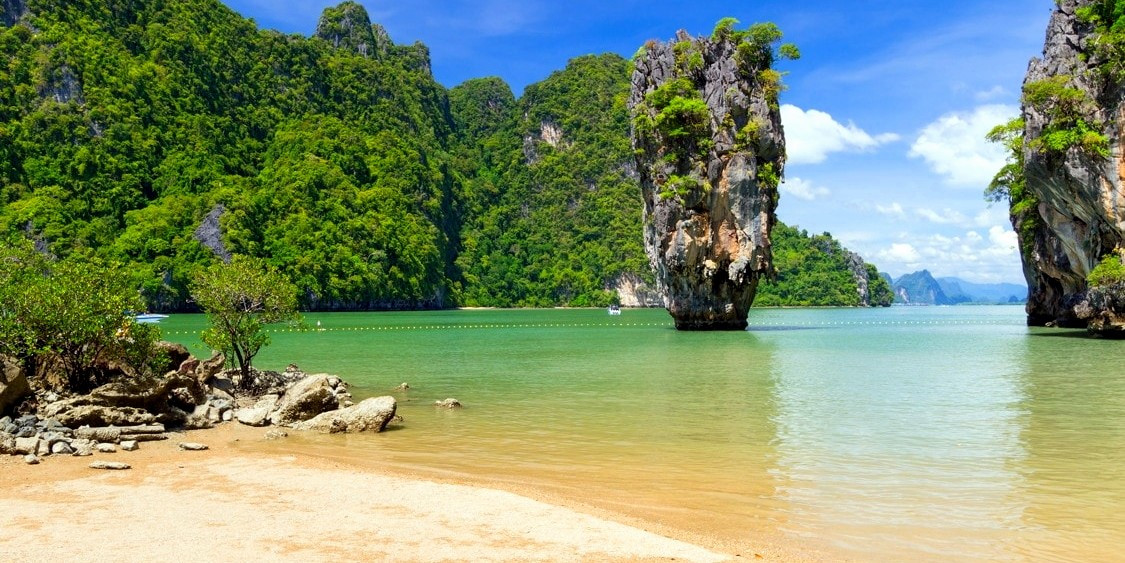
Key Highlights of Island Hopping in Phang Nga Bay
-
James Bond Island (Ko Tapu): This island became famous through the James Bond movie The Man with the Golden Gun." It's a must-visit for fans and offers spectacular scenery perfect for photography.
-
Koh Panyee: This is a floating Muslim fishing village built on stilts, with a towering rock monolith as its backdrop. Visitors can explore the village, meet the locals, and enjoy fresh seafood in one of the many restaurants.
-
Sea Caves and Hidden Lagoons: Many islands in Phang Nga Bay have hidden sea caves and lagoons (hongs) that can be explored by sea kayaks. These areas are accessible only at certain tides, making the experience even more special and unique.
-
Snorkeling and Diving: The clear waters of the bay are ideal for snorkeling and diving, with a chance to see a variety of marine life, including fish, corals, and occasionally sea turtles.
-
Relaxing on Secluded Beaches: The bay's numerous islands offer countless opportunities to relax on secluded beaches, away from the crowds of the more popular tourist spots.
Planning Your Island Hopping Adventure
-
Tour Options: Numerous tour operators offer day trips and multi-day tours that include activities like kayaking, snorkeling, and visits to famous spots like James Bond Island. Relax Getaways, for example, could customize your tour to include a mix of popular and lesser-known destinations within the bay.
-
Best Time to Visit: The best time for island hopping in Phang Nga Bay is between November and April, when the weather is dry and the seas are calm, making it ideal for boating and water activities.
-
What to Bring: Pack sunscreen, a hat, comfortable clothing, swimwear, a camera, and water. If you plan to kayak, water shoes can be very helpful.
-
Environmental Consideration: Phang Nga Bay is a delicate ecosystem. Visitors are encouraged to respect the natural environment by not touching or stepping on the coral reefs and by taking all trash back to the mainland.
Island hopping in Phang Nga Bay offers an escape into a world of natural beauty and serene landscapes, where the wonders of nature are displayed in full glory. It's a perfect addition to any Thailand itinerary, offering peace, adventure, and unforgettable scenic views.
Bonus things to do in Thailand (attend Thai special events)
Thailand's vibrant cultural landscape is marked by numerous special events and festivals that offer a deep dive into the local traditions and celebrations. Attending these events can add a unique and memorable dimension to your travel experience. Here are some bonus activities focusing on special Thai events that you should consider:
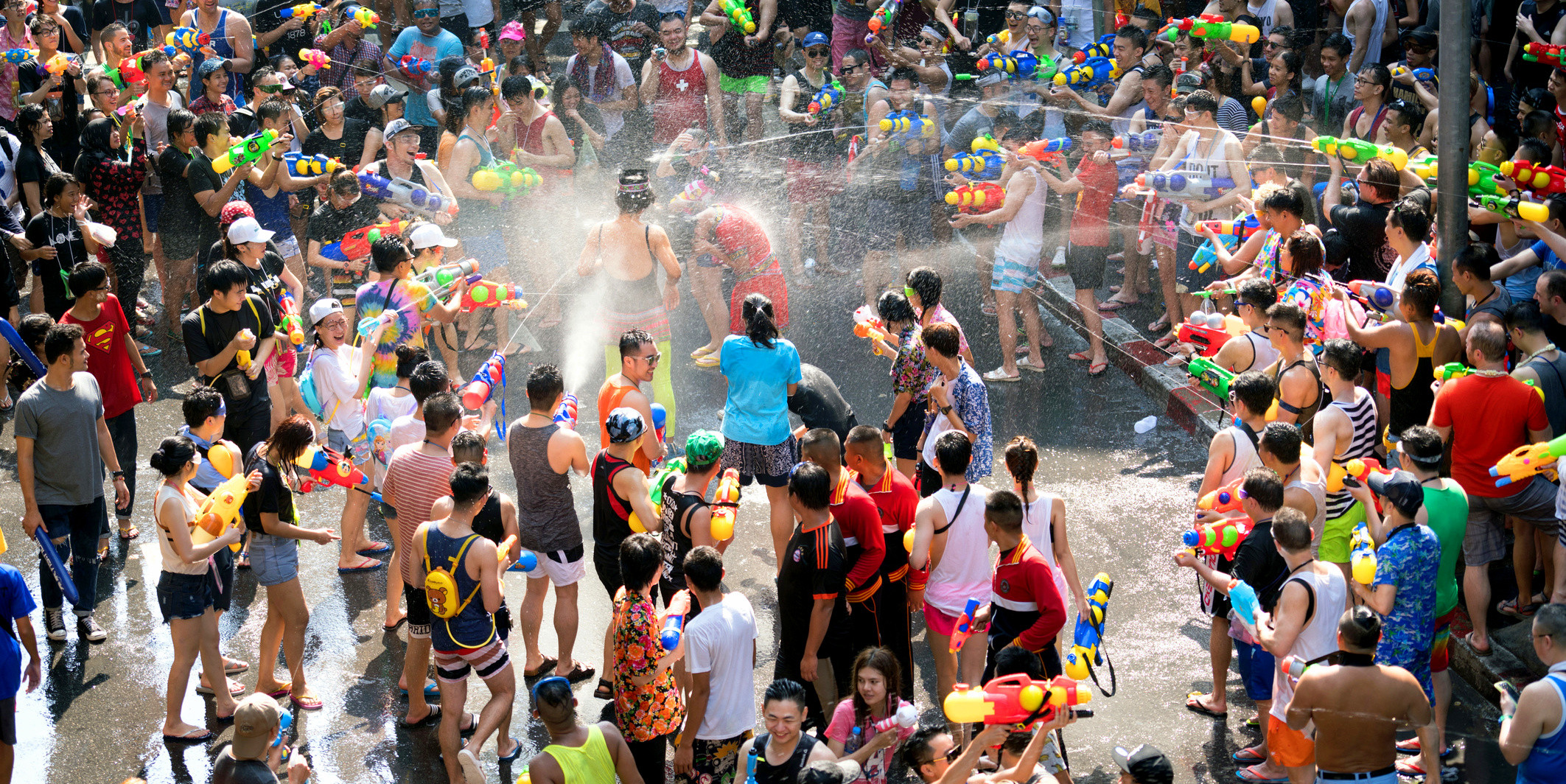
-
Songkran Festival: Celebrated in mid-April, this is Thailand's famous New Year festival. Songkran is best known for its city-wide water fights, a symbol of washing away the misfortunes of the past year and welcoming the new year with a fresh start. It's a fun, festive time to visit, with activities ranging from traditional Buddha statue washing to street parties with live music.
-
Loy Krathong: Held on the evening of the full moon of the 12th month in the traditional Thai lunar calendar (usually in November), Loy Krathong involves people gathering at rivers, lakes, and canals to release small lotus-shaped rafts (krathongs) decorated with candles, incense, and flowers into the water. This beautiful festival symbolizes letting go of all grudges, anger, and defilements so that one can start life afresh.
-
Yi Peng (Lantern Festival): Coinciding with Loy Krathong, Yi Peng is celebrated in Northern Thailand, particularly in Chiang Mai. The festival is famous for its magical scene of thousands of lanterns (khom loi) being released into the night sky, creating a mesmerizing illumination. The act of releasing the lanterns is believed to send misfortune away and bring good luck.
-
Vegetarian Festival: Particularly observed in Phuket with its large Chinese community, this festival takes place in September or October. It features street processions, ceremonial rituals, and, as the name suggests, an abundance of vegetarian food. The festival is rooted in Chinese beliefs, with many participants practicing body piercing and other acts of devotion, which are believed to bring good health and peace of mind.
-
Buffalo Racing Festival: This unique event occurs in October in Chonburi, not far from Bangkok. It features races of water buffalo, which are an integral part of Thai agriculture. The festival also includes contests, games, and folk entertainment, offering a glimpse into rural Thai culture.
-
Monkey Buffet Festival: Held in Lopburi, a province north of Bangkok, this quirky festival in November honors the local monkey population by setting out a buffet of fruits and vegetables. It's a fun spectacle that highlights the playful nature of these creatures and is a great photo opportunity.
-
Surin Elephant Round-up: Usually held in November in Surin Province, this event showcases various activities involving elephants, such as parades, shows, and even soccer matches. It's a celebration of Thailand's national animal and offers insight into the traditional role of elephants in Thai society.
Attending these events allows you to experience the richness of Thai culture and participate in traditions that have been passed down through generations. Each festival provides a unique way to engage with the local community and experience the warmth and hospitality of the Thai people.
Tips for Things to do in Thailand
Songkran Festival: Celebrated in mid-April, this is Thailand's famous New Year festival. Songkran is best known for its city-wide water fights, a symbol of washing away the misfortunes of the past year and welcoming the new year with a fresh start. It's a fun, festive time to visit, with activities ranging from traditional Buddha statue washing to street parties with live music.
-
Loy Krathong: Held on the evening of the full moon of the 12th month in the traditional Thai lunar calendar (usually in November), Loy Krathong involves people gathering at rivers, lakes, and canals to release small lotus-shaped rafts (krathongs) decorated with candles, incense, and flowers into the water. This beautiful festival symbolizes letting go of all grudges, anger, and defilements so that one can start life afresh.
-
Yi Peng (Lantern Festival): Coinciding with Loy Krathong, Yi Peng is celebrated in Northern Thailand, particularly in Chiang Mai. The festival is famous for its magical scene of thousands of lanterns (khom loi) being released into the night sky, creating a mesmerizing illumination. The act of releasing the lanterns is believed to send misfortune away and bring good luck.
-
Vegetarian Festival: Particularly observed in Phuket with its large Chinese community, this festival takes place in September or October. It features street processions, ceremonial rituals, and, as the name suggests, an abundance of vegetarian food. The festival is rooted in Chinese beliefs, with many participants practicing body piercing and other acts of devotion, which are believed to bring good health and peace of mind.
-
Buffalo Racing Festival: This unique event occurs in October in Chonburi, not far from Bangkok. It features races of water buffalo, which are an integral part of Thai agriculture. The festival also includes contests, games, and folk entertainment, offering a glimpse into rural Thai culture.
-
Monkey Buffet Festival: Held in Lopburi, a province north of Bangkok, this quirky festival in November honors the local monkey population by setting out a buffet of fruits and vegetables. It's a fun spectacle that highlights the playful nature of these creatures and is a great photo opportunity.
-
Surin Elephant Round-up: Usually held in November in Surin Province, this event showcases various activities involving elephants, such as parades, shows, and even soccer matches. It's a celebration of Thailand's national animal and offers insight into the traditional role of elephants in Thai society.
Attending these events allows you to experience the richness of Thai culture and participate in traditions that have been passed down through generations. Each festival provides a unique way to engage with the local community and experience the warmth and hospitality of the Thai people.
Ideal Time for Things to do in Thailand
Thailand's tropical climate is typically divided into three seasons: hot, rainy, and cool. Each season offers distinct experiences and varying weather conditions, making some periods more suitable for certain activities than others. Here’s a detailed guide to what you can expect during each season in Thailand:
Hot Season (March to June): The hot season in Thailand sees temperatures often climbing above 30°C (86°F), with April and May being the peak months for heat, especially in inland areas like Bangkok and Chiang Mai.
Activities and Recommendations
-
City Exploration: Early mornings or late afternoons are best for visiting temples and markets to avoid the midday heat. Bangkok's palaces and markets like Chatuchak Weekend Market are still enjoyable if you're prepared with plenty of water and sun protection.
-
Songkran Festival: Celebrated in mid-April, this is the traditional Thai New Year, marked by country-wide water fights. It’s a refreshing way to enjoy the culture during the hotter days.
-
Island Visits: Coastal regions and islands like Phuket and Koh Samui are hot but often tempered by sea breezes, making beach visits and water activities still enjoyable.
Rainy Season (July to October): The rainy season is characterized by monsoonal rains, which usually occur in the late afternoon or evening. While this season sees the most rainfall, it rarely rains all day, and the showers can be quite refreshing.
Activities and Recommendations
-
Natural Attractions: The landscape is lush, and waterfalls are at their most impressive. Visiting national parks and waterfalls, like those in Khao Yai National Park, can be particularly rewarding.
-
Surfing: This is a good time for surfing, especially on the west coast of Phuket, where the waves are higher.
-
Cultural Visits: Museums, indoor attractions, and shopping malls are great rainy day activities. Exploring the many cultural sites in cities like Bangkok or Chiang Mai can also be done between rain showers.
Cool Season (November to February): Often considered the best time to visit, the cool season offers the most comfortable climate with lower humidity and cooler temperatures, particularly in the north of Thailand.
Activities and Recommendations
-
Trekking and Outdoor Activities: Ideal for hiking and trekking in Northern Thailand, such as in Chiang Mai or Pai, where the cooler temperatures make physical activities more enjoyable.
-
Festivals: This season hosts some of Thailand’s most famous festivals, including Loy Krathong and Yi Peng in November, where thousands of lanterns light up the night sky.
-
Beach Holidays: The cool season is also perfect for visiting Thailand’s islands and beaches, with clear skies and calm seas making it ideal for snorkeling, diving, and sunbathing.
Tips for Visiting in Each Season
-
Stay Hydrated: No matter the season, it’s crucial to stay hydrated, given Thailand’s overall warm climate.
-
Pack Appropriately: Light, breathable clothing is suitable for most of the year, but a light jacket may be needed for cooler evenings during the cool season, especially in the north.
-
Plan for Rain: If you travel during the rainy season, bring waterproof gear such as umbrellas or ponchos, and plan flexible itineraries that allow for indoor activities when needed.
Each season in Thailand has its charms and challenges, but with the right preparation and planning, you can have a fulfilling experience exploring the rich culture, beautiful landscapes, and vibrant life of this dynamic country.
From active outdoor excursions and rich cultural celebrations to tranquil beaches and lively night bazaars, Thailand provides every visitor with a dynamic range of things to do. Every season offers different encounters, from the magnificent lantern release during Yi Peng to the celebratory Songkran water battles. Thailand elegantly combines old with new, thanks to its many terrains, friendly people, and tasty food, so every trip is one of adventure and long-lasting memories. Whether you are visiting for the first time or returning for more, Thailand is a place of unlimited opportunities and magic.
FAQs for Things to do in Thailand
Q: What are the must-visit places in Thailand?
A: Essential destinations include Bangkok for its vibrant street life and temples, Chiang Mai for its historical and cultural richness, Phuket and Koh Samui for beautiful beaches, and the historic cities of Ayutthaya and Sukhothai for a glimpse into Thailand’s past.
Q: What is the best time to visit Thailand?
A: The best time to visit is during the cool and dry season from November to February. However, for island activities in the Gulf of Thailand, March to August offers great weather.
Q: What are some traditional Thai dishes I should try?
A: Don’t miss tasting Pad Thai, Tom Yum Goong (spicy shrimp soup), Som Tam (papaya salad), Green Curry, and Mango Sticky Rice.
Q: Are there unique activities to do in Thailand?
A: Yes, you can enjoy activities like night snorkeling in Koh Tao, attending a Thai cooking class, exploring the floating markets, or participating in a traditional Thai festival like Songkran or Loy Krathong.
Q: What are the best outdoor activities in Thailand?
A: Popular outdoor activities include elephant trekking in the north, diving in the Similan Islands, rock climbing in Krabi, and jungle trekking in various national parks like Khao Sok.
Q: How should I dress when visiting temples in Thailand?
A: Dress modestly at temples. This means wearing clothing that covers your shoulders and knees. Sarongs or wraps are often available for rent at the entrance of major temples.
Q: Is Thailand suitable for family travel?
A: Absolutely, Thailand is family-friendly with plenty of activities for children, such as visiting wildlife parks, enjoying beach activities, and exploring amusement parks.
Q: What should I know about nightlife in Thailand?
A: Thailand offers a diverse nightlife scene from vibrant street food markets and cultural shows to lively bars and clubs. Note that some areas, especially in Bangkok and Pattaya, are more adult-oriented.
Q: How can I respect Thai culture during my visit?
A: Show respect by using polite language, not touching people's heads, taking off your shoes before entering someone’s home or a temple, and dressing appropriately.
Q: What are some tips for island hopping in Thailand?
A: Book tours in advance, especially during peak season, choose islands that match your interest whether it’s partying, relaxation, or snorkeling, and always respect the marine environment by not touching coral or feeding the fish.
For the Thailand Tour, please click here.
If you are looking for different kinds of Thailand Packages, feel free to contact us.
